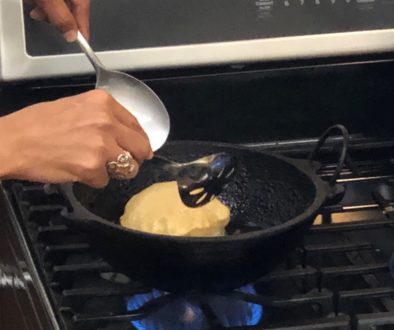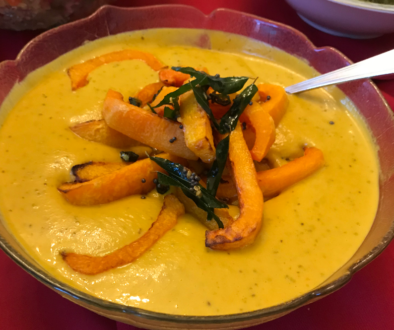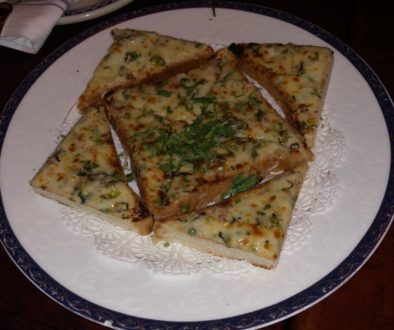The Art of Making Dosas
By Madison Miura
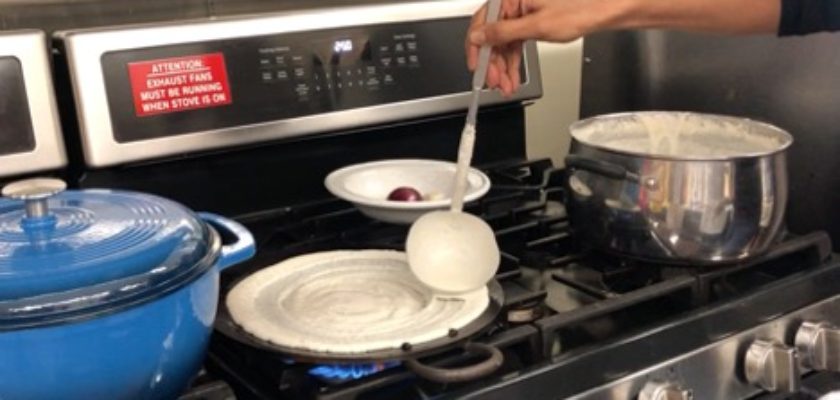
Dosa batter on cast iron skillet
In 2020, I began teaching an Indian food, blogging and photography class at Willliams College, Massachusetts. At each session, students prepared a protein, lentil, vegetable, and bread or rice dish. We concluded the class by sitting around a table, talking and eating all the delicious food prepared.
The class included a Jackson Heights restaurant tour and we observed two chef’s – from Drunken Munkey and Rahi – demonstrate their cooking skills. Below are some of my student’s blog posts.
We watched in awe as Professor Reddy masterfully distributed the white batter in outward-spiraling motions atop the flat surface of the cast iron pan. She made it look so easy, sure-handedly using the back side of the ladle to transform the runny batter into paper-thin dosas. Professor Reddy talked us through her demonstration, explaining how to prepare the skillet with an onion soaked in peanut oil, test the heat of the cooking oil with a small drop of batter, spread the batter, and flip the dosa. We soon tried our hands at the task and produced thick, uneven, hole-riddled things, barely recognizable as lentil crepes. Cooking dosas is a careful art requiring steady technique and temperature control, however, lucky for us amateur cooks, preparing the batter is a relatively fool-proof procedure.

The previous day, a member of our cooking class made the dosa batter with only three ingredients: urad dal (split black lentils) that had been soaked for six hours, rice flour, and water. She used a food processor to combine the ingredients and pulverize them into a pasty, viscous batter (see the right image below). The batter was left in a proofer overnight to aid the fermentation process. The volume of the batter doubled in size during this resting period, which resulted in a highly aerated and fluffy consistency. Proofing the batter is a necessary step of its preparation because the fermentation enables the dosa to be thin and crispy and develops the natural lentil and rice flavors with a slight bite of sourness. After mixing some salt into the batter, it was ready to be cooked.

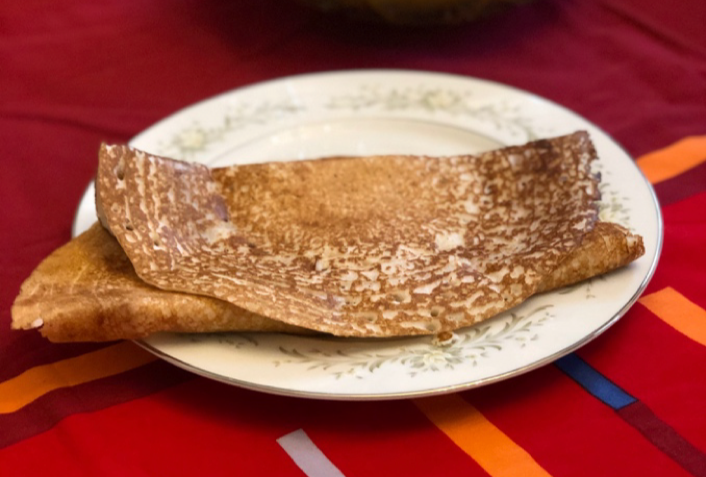
Dosa is a South Indian dish that is often served with various chutneys and sambar (lentil soup). In class, we made a curried potato filling (below on the left) to accompany the dosas in addition to a peanut chutney and sambar. Although the dosa by itself has a distinct, but not overpowering, savory lentil flavor, it serves as the perfect vessel to carry all of the flavors of the potato masala, chutney, and soup straight into an eager mouth. Curry, coriander, mustard seed, chillies, peanuts, turmeric, tamarind, onion – the flavorful components on the loaded dosa dance on the tongue in absolute harmony. Yet, among the potatoes, chutney, and sambar, the dosa shines through with its delicate crunch and slightly salty aftertaste, enticing you to take another bite, or two, or three.

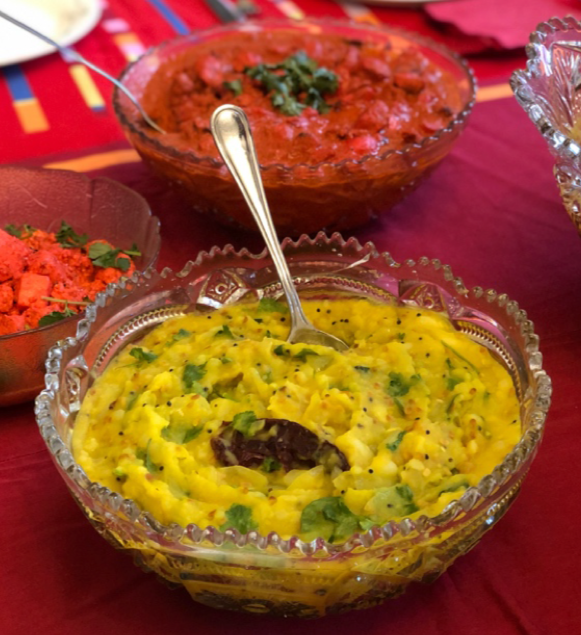
Because dosas are so light and palatable, they can be eaten throughout the day, and are most commonly consumed for breakfast, with dinner, or as a snack. While customarily eaten with chutney and sambar, the versatility of the dosa is unmatched, the potential flavor combinations limitless. As our class discovered, the savory crepe can also be made into a tasty desert with ghee (clarified butter) and sugar. Although this may not have been a traditional way of serving dosa, the rich butter and sweetness of the sugar contrasted by the tang of sourness from the fermented lentil/rice paste produced a surprisingly delectable treat.
Maybe one day, after practicing our batter-spreading and pancake-flipping technique many times, we will be able to cook dosa with the ease demonstrated by Professor Reddy and street vendors in India, who churn out dosas as if they were born with the skill. The dosa will become a staple in our households, and we will laugh when we recall our failed first attempts. For now, though, we remain humble students to the art of dosa making.
Dosa recipe:
1 cup urad dal – soaked 6 hrs
Grind with 3 cups rice flour and water
Proof batter overnight
Add salt next day
Cook stovetop with peanut oil (use a cast iron pan)
Madison Miura is a senior at Williams College where she is double majoring in biology and sociology. She has been dancing (ballet, jazz, and hip-hop) since she was four years old and is now the President of her student-led hip-hop group. When she is not studying or dancing, Madison enjoys experimenting in the kitchen and crisis counseling via SMS text for Crisis Text Line.





